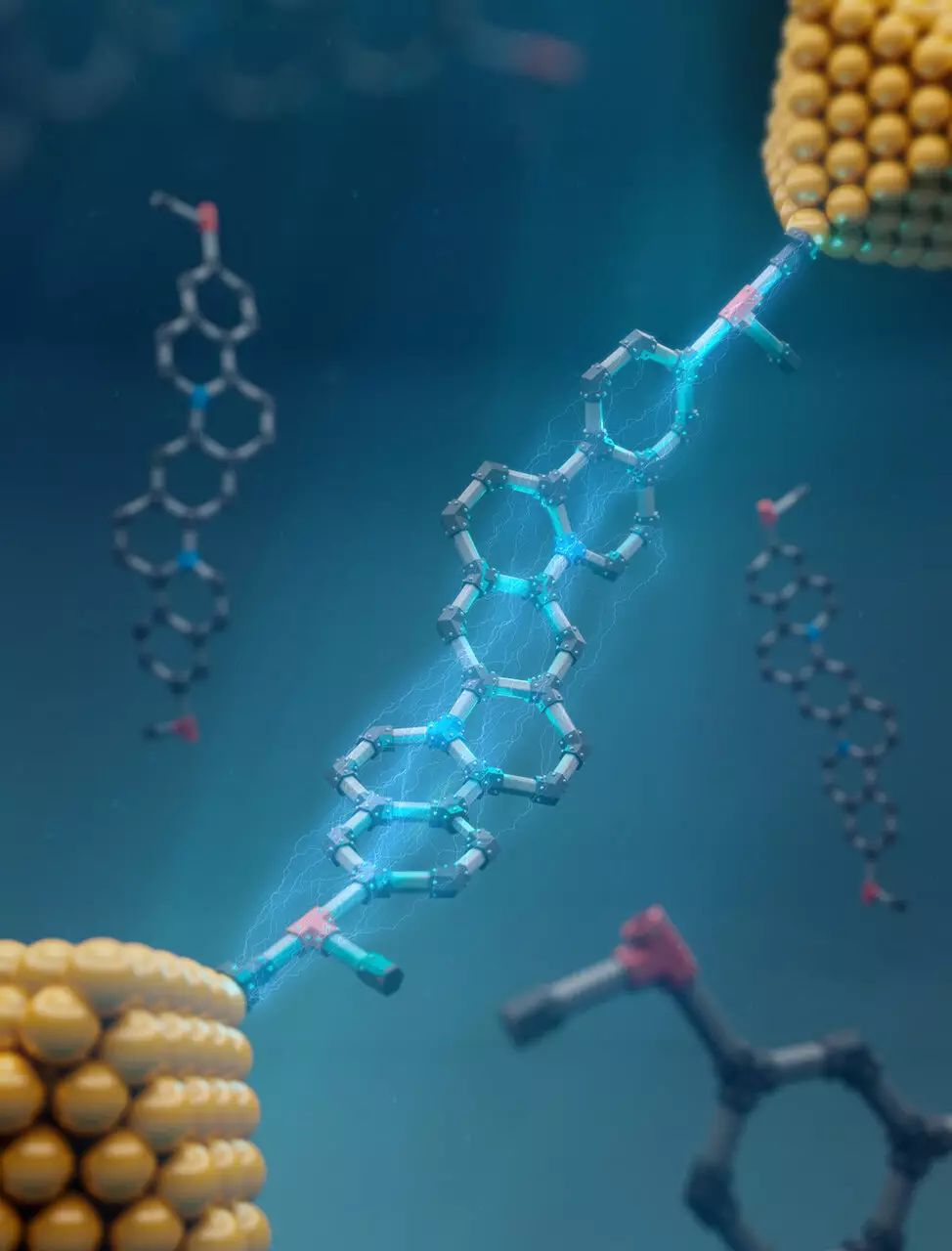As our reliance on electronic devices increases, the demand for smaller, more efficient components is becoming critical. The pioneering Moore’s Law, which predicts a doubling of transistor density in silicon-based microchips roughly every two years, is facing challenges due to physical size limits in traditional silicon technology. In this context, molecular electronics emerges as an exciting frontier, utilizing single molecules as fundamental building blocks for electronic components. This transformative approach not only promises further miniaturization but also enhances the functionality of electronic devices.
However, the integration of molecular components into electronic devices does not come without its hurdles. Chief among them is the need for consistent control over electrical current. Since many organic molecules are inherently flexible, they can exist in various conformations—a phenomenon known as molecular conformational variability. This characteristic leads to fluctuations in electrical conductance, which can differ as much as 1,000 times between different states of a molecule. This inconsistency jeopardizes the reliability of molecular electronics, making it difficult to manufacture components that exhibit uniform electrical properties.
According to Charles Schroeder, a renowned professor at the University of Illinois Urbana-Champaign, addressing this flexibility is crucial. “In molecular electronics, one must consider the flexibility and motion of molecules and how this affects their functional properties,” he emphasizes. The pressing question remains: how can researchers stabilize conductance in the face of fluctuating molecular forms?
Recent research has shed light on an innovative approach to stabilize molecular conductance. The team led by Schroeder has identified that utilizing ladder-type molecules with rigid backbones can serve as a solution to this conformation-dependent conductance issue. By locking the molecule into a specific shape, the researchers have effectively constrained the rotary movements that typically give rise to conductance variability. This pivotal discovery ensures that these molecules maintain a stable set of conformations, significantly minimizing fluctuations in electrical conductance.
The integration of these rigid structures allows for more reliable electronic properties across billions of components, addressing one of the significant barriers that has impeded the commercialization of molecular electronics. The insights provided by this research hold the potential to revolutionize the landscape of electronic applications, offering a path towards devices with consistent performance and smaller footprints.
The researchers have also made notable innovations in the synthesis of these shape-persistent molecules. Instead of traditional, multi-step processes that often require expensive starting materials, they have developed a streamlined “one-pot” synthesis approach. This modular technique allows researchers to combine simpler, commercially available starting materials to generate a diverse array of ladder-like molecules. By simplifying the synthesis process, this method not only reduces costs but also increases the potential for creating a broad spectrum of products tailored for various electronic applications.
The simplicity and effectiveness of this one-pot ladderization synthesis strategy promise to enhance the accessibility of molecular electronics, paving the way for more widespread adoption.
Beyond the fabrication of ladder-type molecules, the rules established in this research have broader implications. The team has successfully applied their findings to create a new butterfly-like molecule, showcasing the versatility of the rigid backbone approach. These butterfly molecules also feature a locked structure, preventing unwanted conformational changes, thereby ensuring more consistent electronic performance.
This expansion into different molecular architectures signals the potential for future designs of functional materials that could further consolidate the role of molecular electronics in the tech industry. As researchers continue to explore and refine these principles, we may be on the brink of new and advanced materials that will redefine electronic device fabrication.
As the push for smaller, more efficient electronic devices intensifies, the arena of molecular electronics holds significant promise. By overcoming the challenges associated with molecular conductance through the use of rigid backbone structures and innovative synthesis techniques, researchers are making strides toward stabilizing electronic properties. This progress not only helps in the quest for miniaturization but also increases the reliability and performance of future devices. The emergence of consistent and robust molecular junctions could very well underpin the next generation of electronic technology, where size no longer limits functionality.

